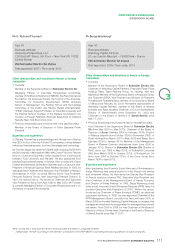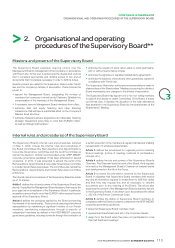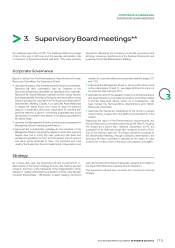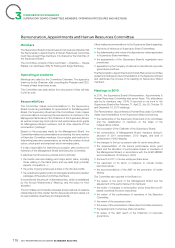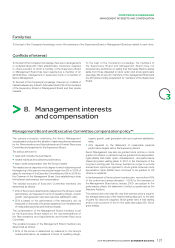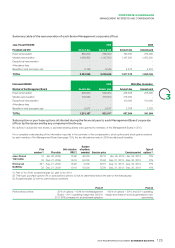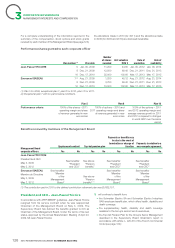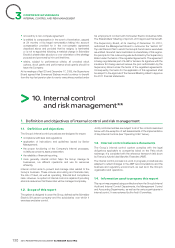APC 2010 Annual Report Download - page 123
Download and view the complete annual report
Please find page 123 of the 2010 APC annual report below. You can navigate through the pages in the report by either clicking on the pages listed below, or by using the keyword search tool below to find specific information within the annual report.
CORPORATE GOVERNANCE
3
MANAGEMENT INTERESTS ANDCOMPENSATION
Family ties
To the best of the Company’s knowledge, none of the members of the Supervisory Board or Management Board are related to each other.
Conflicts of interest
To the best of the Company’s knowledge, there are no arrangements
or understandings with major shareholders, customers, suppliers
or others pursuant to which a member of the Supervisory Board
or Management Board has been selected as a member of an
administrative, management or supervisory body or a member of
Senior Management.
To the best of the Company’s knowledge, there are no confl icts of
interest between any duties to Schneider Electric SA of the members
of the Supervisory Board or Management Board and their private
interests.
To the best of the Company’s knowledge, the members of
the Supervisory Board and Management Board have not
accepted any restrictions on selling their Schneider Electric shares
asidefrom those stipulated in stock option and stock grant plans
(seepage252etseq.) for members of the management Board and
the 250 share-holding requirement for members of the Supervisory
Board.
>
8. Management interests
andcompensation
Management Board and Executive Committee compensation policy**
The general principles underlying the Senior Management
compensation policy and the situation of each executive are reviewed
by the Remunerations and Appointments and Human Resources
Committee and presented to the Supervisory Board.
The policy’s aims are to:
•retain and motivate the best talents;
•reward individual and collective performance;
•align overall compensation with the Group’s results.
The variable bonus depends on the degree to which objectives set at
the beginning of the year are met and can range from 0% to 160% of
salary for members of the Executive Committee and 0% to 200% for
the Chairman of the Management Board, thus establishing a close
link between performance and compensation.
The variable bonuses of Executive Committee members are
determined as follows:
•45% of the bonus is determined by reference to the Group’s overall
performance, as measured in terms of operating margin, organic
growth, cash generation ratio and customer satisfaction rates;
•55% is based on the performance of the executive’s unit, as
measured on the basis of business targets and on the attainment
of measurable personal performance targets.
The compensation of the Management Board members is set
by the Supervisory Board based on the recommendations of
the Remunerations and Appointments and Human Resources
Committee.
The variable bonuses of the Management Board members are
determined as follows:
•60% of the bonus is determined by reference to the Group’s
overall performance, as measured in terms of operating margin,
organic growth, cash generation ratio and customer satisfaction
rates;
•40% depends on the attainment of measurable personal
performance targets set by the Supervisory Board.
Senior Management may also be granted stock options or stock
grants. US citizens or residents may be granted stock appreciation
rights (SARs) that match option characteristics - and performance
shares (long-term vesting plans). In 2010, in the Framework of the
long-term vesting plan the Group decided no longer to provide
annual stock options as opposed to stock grants. However stock
appreciation rights (SARs) have continued to be granted to US
citizens or residents.
In the framework of the long-term incentive plan, income from 50%
of the options and shares allocated - 100% for the members of
the Management Board since January 2009- are subject to the
performance criteria, the attainment of which is sanctioned by the
Statutory Auditors.
The options have a ten-year life, and their exercice price is equal to
the average share price of the twenty trading days prior to the date
of grant. No discount is applied. Stock grants have a total vesting
and/or lock-up period of four to fi ve years (see page 256, Stock
grant details).
2010 REGISTRATION DOCUMENT SCHNEIDER ELECTRIC 121


